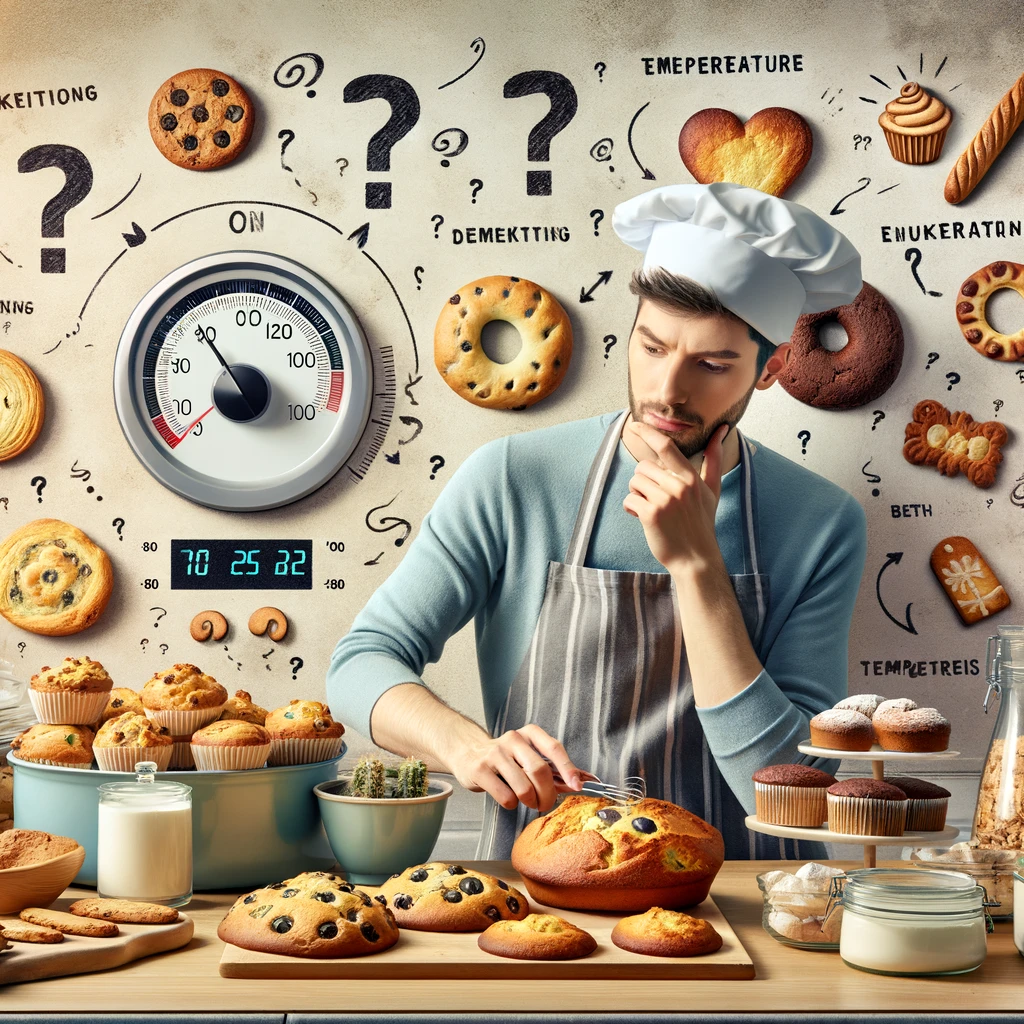
Decoding Baking Temperatures: What to Do When the Recipe is Silent
Have you ever stumbled upon a mouthwatering recipe only to find that it lacks crucial information like the baking temperature? It’s a common dilemma for home bakers, but don’t let this oversight stop you from whipping up delicious baked goods. Here’s a guide to help you decide the right baking temperature when your recipe keeps silent, ensuring your creations turn out perfect every time.
1. Understand the Baked Good
The type of baked good you’re making can often guide you towards the right temperature range. Here’s a quick breakdown:
- Cookies and Scones: Typically bake well at around 170°C. This temperature allows for a soft center with slightly crispy edges.
- Cakes and Cupcakes: Usually best at 180°C. Lower temperatures prevent the edges from burning and ensure an even rise.
- Pies and Tarts: Generally need a hotter oven, around 180°C, especially if you’re aiming for a flaky crust.
- Breads: Vary widely, 190°C is a safe starting point for many loaves, adjusting based on moisture content and density.
2. Consider the Ingredients
Ingredients can affect how heat is conducted throughout your bake:
- Sugar Content: High sugar recipes may do better at slightly lower temperatures (325°F/163°C) to avoid caramelizing or burning the edges.
- Fat Content: Rich, buttery doughs (like for pie crusts or puff pastry) often require higher temperatures to achieve flaky layers and golden color.
3. Size and Shape Matter
The thickness and size of what you’re baking will impact how heat distributes:
- Thin Cookies: May need a brief time at a higher temperature to crisp up without becoming too hard.
- Thick Cakes: Lower temperatures for a longer time help the middle cook thoroughly without over-browning the outside.
4. Experiment with Caution
If you’re really unsure, start with a moderate temperature like 350°F (177°C) and adjust based on how the item is baking. You can always increase the heat if underbaking seems apparent, or lower it if the edges darken too quickly.
5. Use Visual Cues
Become familiar with visual cues for doneness. Golden edges on cookies, a skewer that comes out clean from a cake, or a hollow sound when you tap the bottom of a loaf of bread are all clues that your baked good is properly cooked.
Conclusion:
Lacking specific temperature instructions doesn’t have to be a recipe for disaster. By understanding the nature of your baked goods and observing how ingredients interact with heat, you can confidently decide on the appropriate baking temperature. Remember, every oven is different, so getting to know how yours operates will also improve your results. Happy baking, and may your treats always come out just as you envision!

